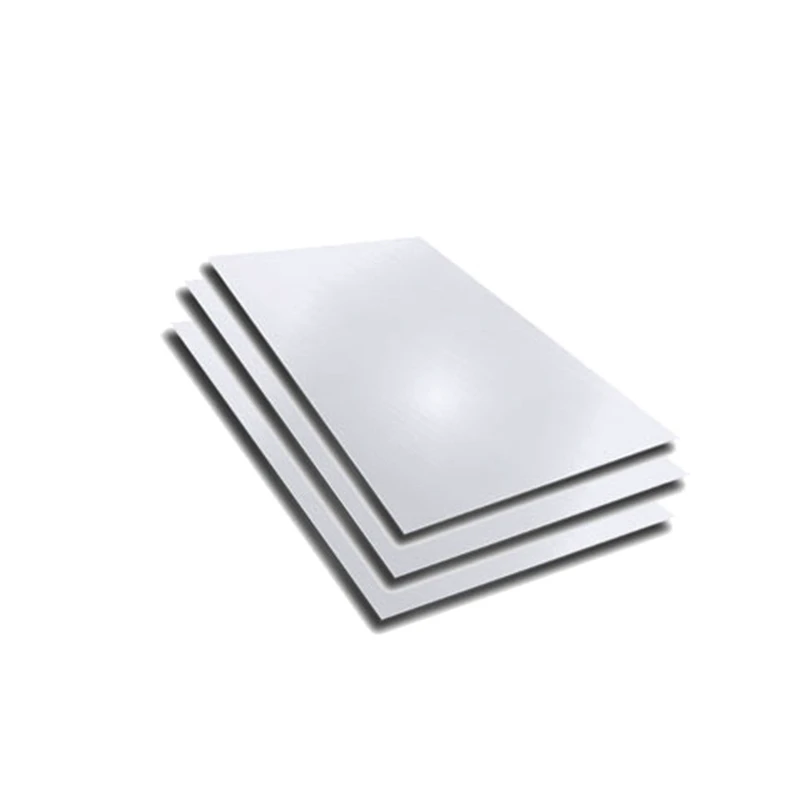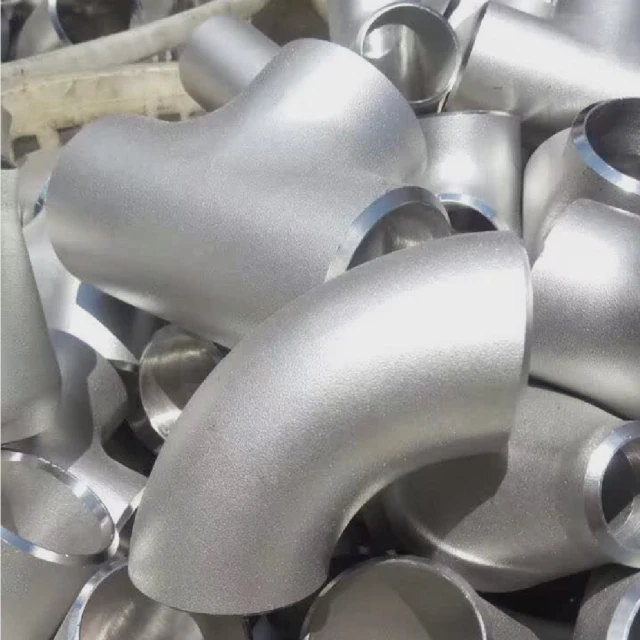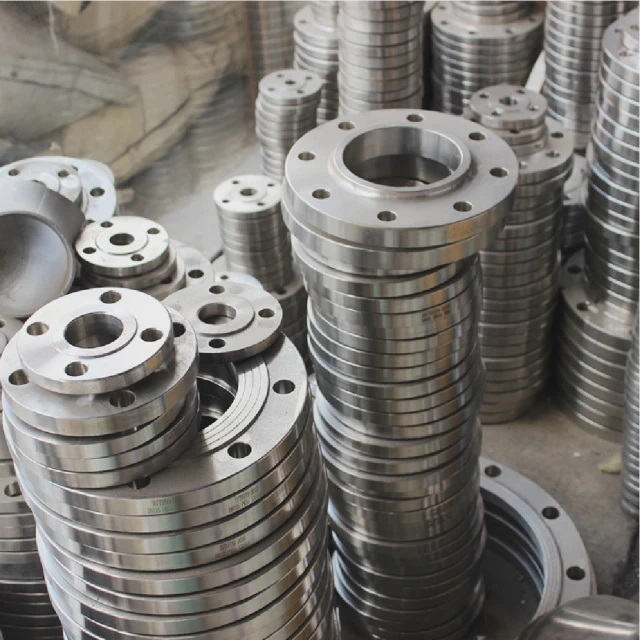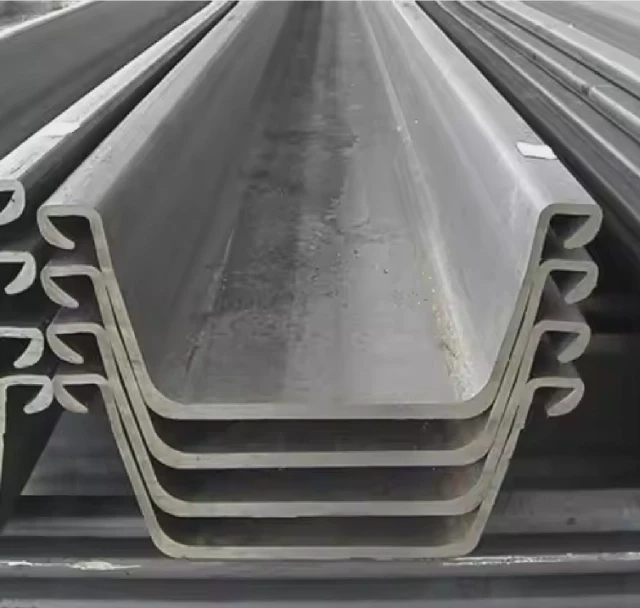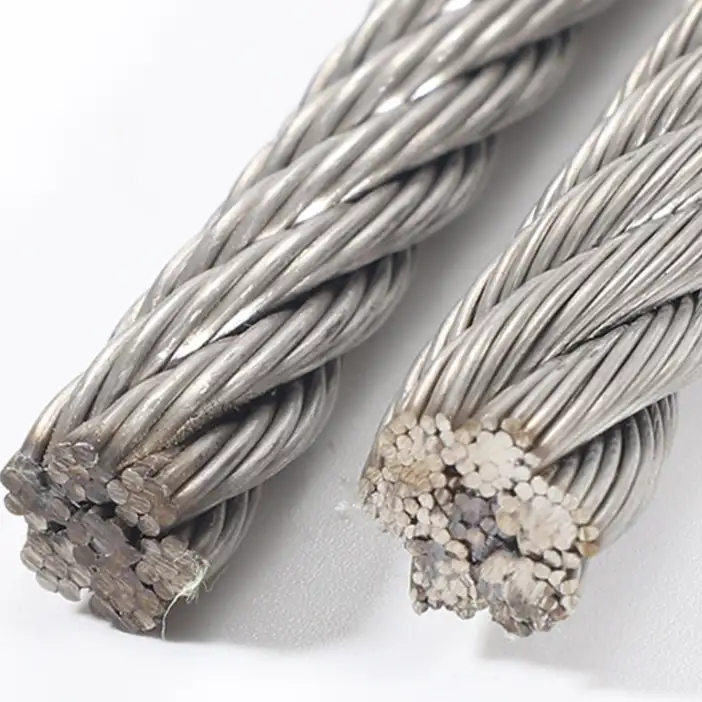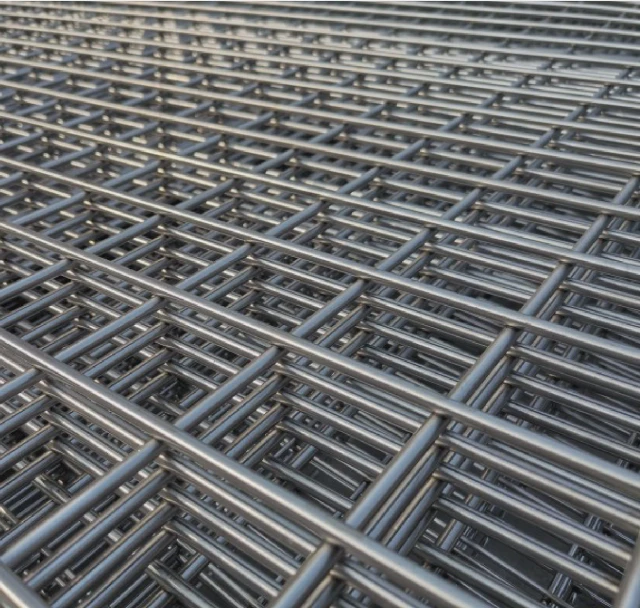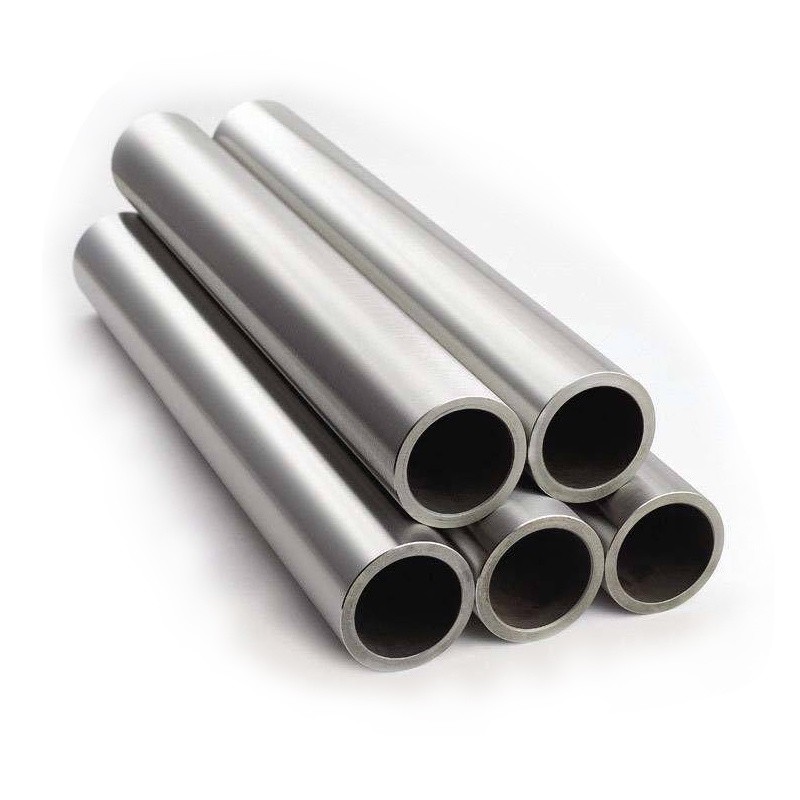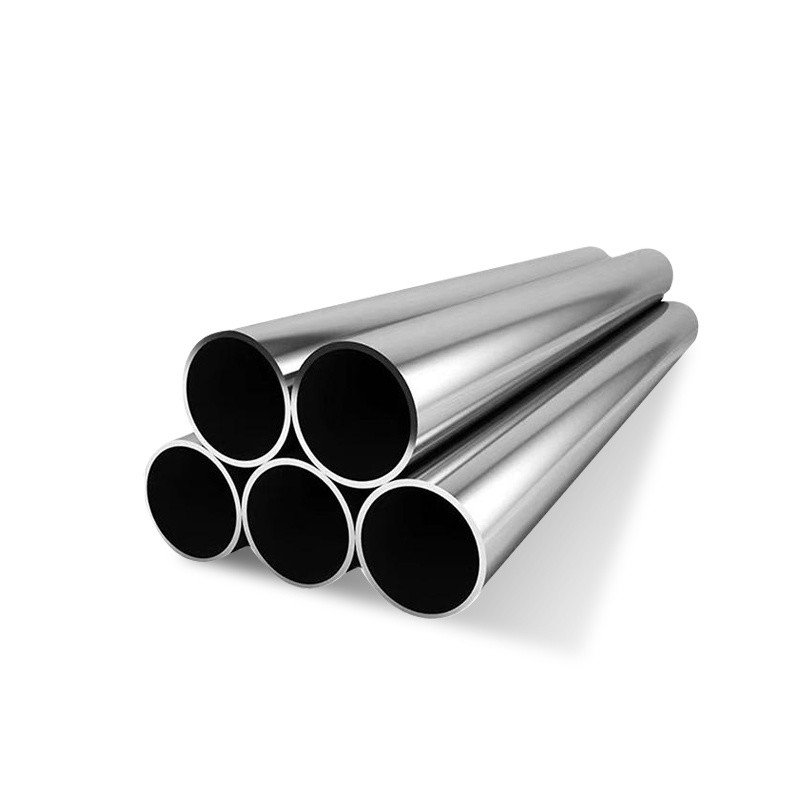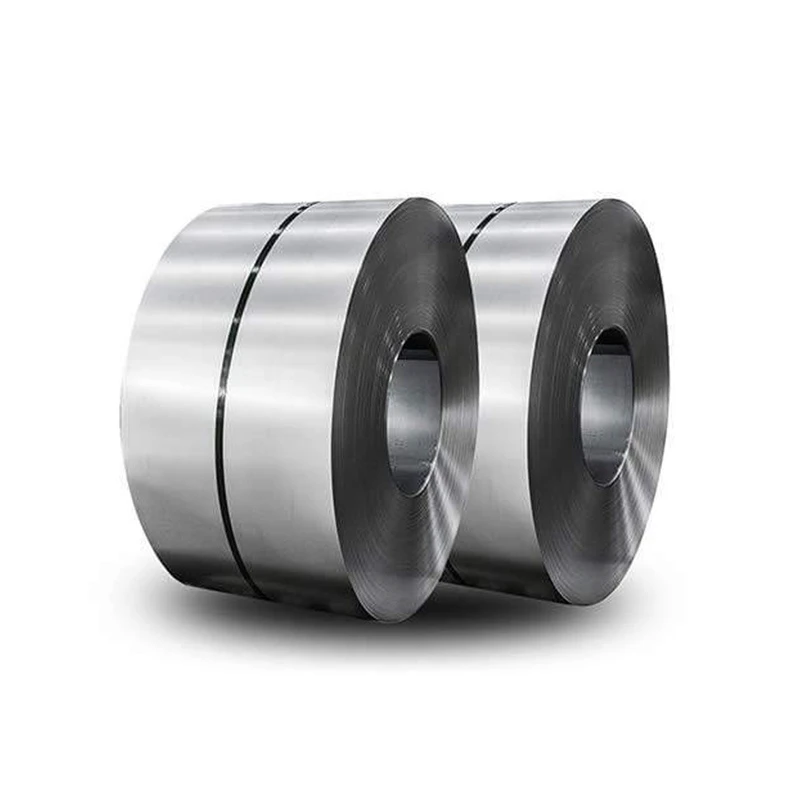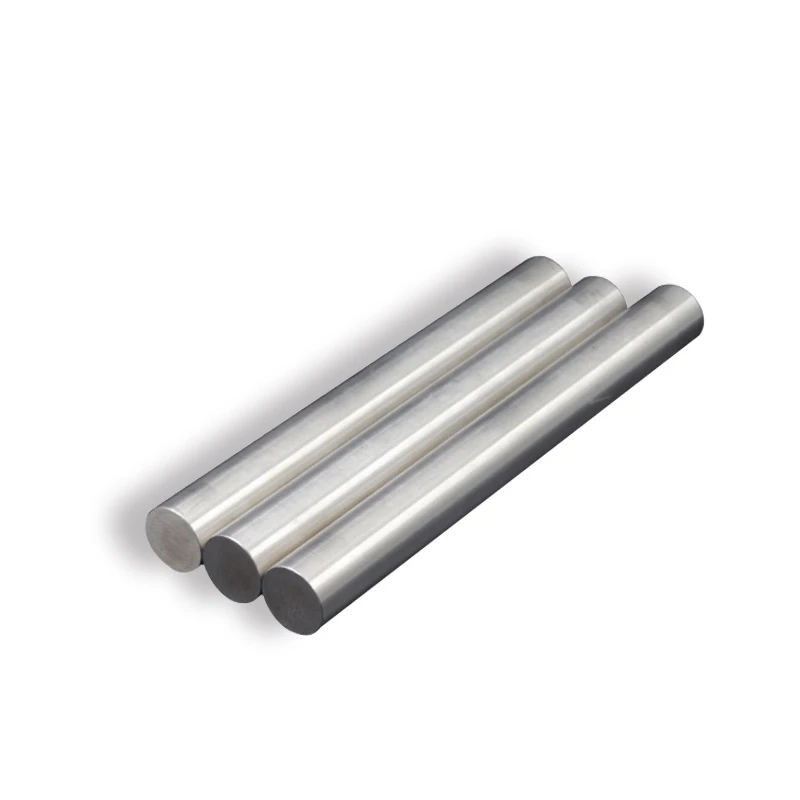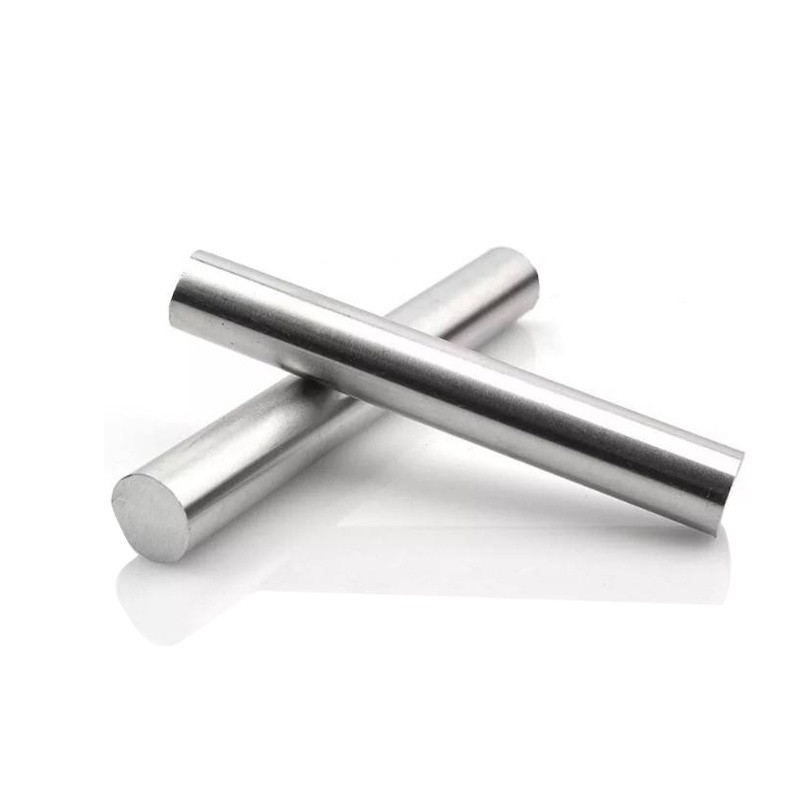
CATEGORIES
FEATURED PRODUCTS
2507 Duplex Stainless Steel Plate
We offer this product and related grades with 100% factory direct pricing and free quotes available within 24 hours.
APPLICATION SCENARIOS

OUR ADVANTAGE

Certificate of Honor

PARTNER

Our Factory

The 2507 Duplex Stainless Steel Plate, often referred to as Super Duplex 2507 (with UNS S32750 being its common designation), is an advanced duplex stainless steel distinguished by its significantly higher alloy content compared to standard duplex grades like 2205. Its microstructure, a carefully balanced mix of approximately 50% austenite and 50% ferrite, is optimized to deliver unparalleled levels of strength and corrosion resistance. This alloy stands out for its exceptional resistance to general corrosion, pitting, crevice corrosion, and especially to chloride-induced stress corrosion cracking (SCC), making it the material of choice for critical applications in hostile environments.
We understand that for industries facing extreme conditions, material failure is not an option. That's why 2507 duplex stainless steel is designed to meet the most rigorous demands, offering a level of durability and reliability that can drastically extend equipment lifespan and reduce maintenance costs. Its ability to perform in highly corrosive, high-pressure, and often high-temperature chloride environments makes it indispensable across a range of heavy industries.
At Luokaiwei, we are committed to supplying 2507 Duplex Stainless Steel Plates that adhere to the highest international quality standards. We ensure that every plate delivers the robust performance and exceptional reliability required for your most challenging projects.
Properties of 2507 Duplex Stainless Steel
The superior performance of 2507 duplex stainless steel is a direct result of its carefully balanced dual-phase microstructure and a precise, high-alloy chemical composition. Let's examine its key properties in detail.
Mechanical Properties
2507 duplex stainless steel boasts exceptional mechanical properties, significantly surpassing those of both austenitic and standard duplex grades. Its high strength allows for thinner, lighter designs in many applications.
| Property | Metric Value | Imperial Value |
| Tensile Strength (min) | 795 MPa | 116 ksi |
| Yield Strength (0.2% Offset) (min) | 550 MPa | 80 ksi |
| Elongation (in 50mm) (min) | 15% | 15% |
| Hardness (Rockwell C) (max) | 32 | 32 |
| Hardness (Brinell) (max) | 310 | 310 |
| Impact Toughness (Room Temp) | ≥45 J (average) | ≥33 ft-lbs (average) |
Physical Properties
The physical properties of 2507 duplex stainless steel contribute to its high-performance characteristics, including excellent thermal conductivity and a low coefficient of thermal expansion.
| Property | Metric Value | Imperial Value |
| Density | 7.8 g/cm³ | 0.281 lb/in³ |
| Melting Range | 1410 – 1460 °C | 2570 – 2660 °F |
| Thermal Conductivity (at 20°C) | 14.2 W/m·K | 8.2 BTU/ft·hr·°F |
| Specific Heat (at 0-100°C) | 500 J/kg·K | 0.12 BTU/lb·°F |
| Electrical Resistivity | 0.80 µΩ·m | 480 ohm-circ mil/ft |
| Coefficient of Thermal Expansion (0-100°C) | 13.7 µm/m·°C | 7.6 µin/in·°F |
Corrosion Resistance
The corrosion resistance of 2507 duplex stainless steel is its most defining characteristic, placing it among the most corrosion-resistant alloys available.
- Pitting and Crevice Corrosion: With a Pitting Resistance Equivalent Number (PREN) typically above 40 (due to its high chromium, molybdenum, and nitrogen content), 2507 offers outstanding resistance to pitting and crevice corrosion, even in highly aggressive chloride environments like warm seawater. This performance is often comparable to or even surpasses that of 6% Molybdenum "super austenitic" grades.
- Stress Corrosion Cracking (SCC): The balanced duplex microstructure provides exceptional resistance to chloride-induced stress corrosion cracking, a common failure mechanism for austenitic stainless steels in hot chloride solutions. This is a critical advantage in many industrial applications.
- General Corrosion: 2507 exhibits excellent resistance to uniform corrosion in a wide range of organic and inorganic acids, particularly those containing chlorides (e.g., dilute hydrochloric acid).
- Erosion-Corrosion and Corrosion Fatigue: It also performs remarkably well against erosion-corrosion and corrosion fatigue, making it suitable for applications involving abrasive particles or dynamic loading in corrosive media.
It's important to note that like other duplex stainless steels, 2507 can be susceptible to embrittlement if exposed to temperatures above 300°C (572°F) for extended periods due to the formation of detrimental intermetallic phases. Therefore, its continuous service temperature range is generally limited to below this threshold.
Fabrication and Heat Treatment
Working with 2507 duplex stainless steel requires specialized knowledge and equipment due to its high strength and unique microstructure.
- Forming: While 2507 has good ductility, its very high strength means that significantly more power is required for forming operations compared to austenitic stainless steels. Cold forming is possible but severe deformation should be avoided without intermediate annealing. Hot forming is typically performed within a narrow temperature range (around 1100°C to 1150°C or 2010°F to 2100°F) to ensure optimal properties are maintained. High spring-back should also be anticipated.
- Welding: 2507 possesses good weldability, but strict control of heat input is crucial during welding to maintain the optimal ferrite-austenite balance in the weld metal and heat-affected zone (HAZ). Overheating or underheating can lead to the formation of detrimental phases or an unbalanced microstructure, compromising corrosion resistance and toughness. Filler metals with higher nickel and nitrogen content (such as ER2594) are typically used to achieve the desired balance.
- Heat Treatment: 2507 duplex stainless steel cannot be hardened by heat treatment. It can only be hardened through cold working. The primary heat treatment is solution annealing, which involves heating to a temperature range of 1020°C to 1100°C (1868°F to 2012°F) followed by rapid quenching (e.g., in water) to restore the optimal duplex microstructure, maximum ductility, and corrosion resistance after any hot or cold working, or welding processes.
Dimensions and Parameters of 2507 Duplex Stainless Steel Plate
At Luokaiwei, we offer 2507 Duplex Stainless Steel Plates in a comprehensive range of standard dimensions and are fully equipped to provide custom sizes and specifications to meet the exacting requirements of your projects.
Standard Plate Dimensions
Our typical stock dimensions for 2507 duplex stainless steel plates usually include:
| Thickness (mm) | Width (mm) | Length (mm) |
| 3.0 – 6.0 | 1000 | 2000 |
| 3.0 – 6.0 | 1219 | 2438 |
| 3.0 – 6.0 | 1500 | 3000 |
| 6.0 – 200.0 | 1500 | 6000 |
| 6.0 – 200.0 | 2000 | 8000 |
| 6.0 – 200.0 | 2500 | 12000 |
Note: For extremely thick plates (over 200mm), extra-wide plates (up to 3000mm), or exceptionally long plates, please consult our sales and technical team. We specialize in providing tailored solutions for highly demanding applications.
Surface Finishes
While the primary consideration for 2507 duplex stainless steel is its functional performance, various surface finishes are available to suit application requirements and subsequent processing needs:
- No. 1 Finish: This is a hot-rolled, annealed, and descaled finish, characterized by a rough, dull appearance. It's commonly used for industrial applications where aesthetics are secondary to the material's strength and corrosion resistance.
- 2B Finish: A cold-rolled, annealed, pickled, and pinch-passed finish. This is a common general-purpose finish, offering a smooth, moderately reflective surface. It provides a good balance of appearance and cost-effectiveness.
- Pickled & Oiled (P/O): Often applied to heavier gauge plates, this finish results from pickling to remove scale and then oiling to protect the surface, making it suitable for subsequent fabrication processes.
Chemical Composition of 2507 Duplex Stainless Steel
The exceptional properties of 2507 duplex stainless steel are directly attributed to its meticulously controlled and high-alloy chemical composition. The elevated levels of chromium, molybdenum, and nitrogen are critical for its superior performance.
| Element | Weight (%) |
| Carbon (C) | 0.030 max |
| Manganese (Mn) | 1.20 max |
| Phosphorus (P) | 0.035 max |
| Sulfur (S) | 0.020 max |
| Silicon (Si) | 0.80 max |
| Chromium (Cr) | 24.0 – 26.0 |
| Nickel (Ni) | 6.0 – 8.0 |
| Molybdenum (Mo) | 3.0 – 5.0 |
| Nitrogen (N) | 0.24 – 0.32 |
| Copper (Cu) | 0.50 max |
| Iron (Fe) | Balance |
At Luokaiwei, we rigorously ensure that our 2507 duplex stainless steel plates strictly adhere to these precise compositional limits, guaranteeing the high-performance characteristics and reliability essential for critical applications. The low carbon content is vital for preventing sensitization during welding and maintaining corrosion resistance.
2507 Duplex Stainless Steel vs. Other Stainless Steel Grades
Understanding the significant advantages of 2507 duplex stainless steel in comparison to other grades is fundamental for selecting the optimal material for your specific application.
2507 Duplex Stainless Steel vs. 2205 Duplex Stainless Steel
While both 2507 and 2205 are duplex stainless steels, 2507 is classified as a "super duplex" due to its higher alloy content, leading to superior performance in the most demanding conditions.
| Feature | 2507 Super Duplex Stainless Steel | 2205 Duplex Stainless Steel |
| Chromium Content | 24.0-26.0% (higher) | 22.0-23.0% (lower) |
| Molybdenum Content | 3.0-5.0% (higher) | 3.0-3.5% (lower) |
| Nitrogen Content | 0.24-0.32% (higher) | 0.14-0.20% (lower) |
| Yield Strength | Significantly higher (approx. 550 MPa min) | High (approx. 450 MPa min) |
| Pitting Resistance (PREN) | >40 (Superior) | 33-34 (Excellent) |
| Corrosion Resistance | Exceptional, even in extremely aggressive chlorides | Excellent, but less resistant in highly aggressive chlorides |
| Cost | Higher | Moderate |
| Application Suitability | Extreme corrosive environments, high pressure, high strength demands | General corrosive environments, high strength applications |
The higher PREN value of 2507 is a key indicator of its superior resistance to localized corrosion, particularly pitting and crevice corrosion in chloride-rich environments. If your application involves particularly hot, concentrated, or highly saline solutions, 2507 provides an additional margin of safety and extended lifespan compared to 2205.
2507 Duplex Stainless Steel vs. 316L Stainless Steel
Comparing 2507 to 316L (a standard austenitic stainless steel with molybdenum) highlights the significant leap in performance offered by super duplex grades.
| Feature | 2507 Super Duplex Stainless Steel | 316L Stainless Steel |
| Microstructure | Austenitic-Ferritic (Duplex) | Austenitic |
| Yield Strength | Roughly 2-3 times higher than 316L | Standard |
| Corrosion Resistance | Superior in almost all aspects (especially SCC, chlorides) | Good (improved over 304, but vulnerable to SCC in hot chlorides) |
| Pitting Resistance (PREN) | >40 (Excellent) | ~25 (Good) |
| Stress Corrosion Cracking | Excellent resistance | Susceptible in hot chlorides |
| Cost | Highest | Moderate |
| Thermal Expansion | Lower (closer to carbon steel) | Higher |
| Weldability/Fabrication | Requires specific procedures | Generally easier to weld/form |
The advantages of 2507 over 316L are stark: significantly higher strength allows for thinner, lighter designs, and its unparalleled resistance to chloride-induced corrosion and SCC means vastly improved reliability and lifespan in the harshest environments. While 316L remains an excellent choice for many applications, 2507 is the clear choice when conditions push the limits of conventional stainless steels.
Application Industries for 2507 Duplex Stainless Steel Plate
The exceptional combination of high strength and superior corrosion resistance makes 2507 Duplex Stainless Steel Plate the material of choice for the most demanding applications across a variety of critical industries. At Luokaiwei, we frequently provide 2507 for:
Oil & Gas Industry
This sector relies heavily on 2507 for its ability to withstand highly corrosive downhole and offshore environments.
- Pipes and flowlines: Especially for handling sour gas (H2S) and high-chloride brines.
- Separators, scrubbers, and pressure vessels: Equipment exposed to aggressive well fluids.
- Heat exchangers: Operating in highly corrosive and high-temperature conditions.
- Subsea equipment: Including manifolds, risers, and wellhead components requiring extreme durability.
- Fire fighting systems and ballast water systems: On offshore platforms.
Chemical Processing Industry
2507 is invaluable in chemical plants where resistance to strong acids, chlorides, and other aggressive chemicals is paramount.
- Reactors, tanks, and process vessels: For the production and storage of highly corrosive chemicals.
- Piping systems: Transporting aggressive chemical solutions.
- Heat exchangers and condensers: In processes involving elevated temperatures and corrosive media.
- Evaporators and dissolvers: Used in the production of various chemicals.
Marine and Shipbuilding
Its outstanding resistance to saltwater corrosion and high strength-to-weight ratio are critical for marine applications.
- Desalination plants: High-pressure piping, pumps, and vessels in reverse osmosis (RO) systems.
- Offshore structures: Components for drilling rigs, platforms, and floating production storage and offloading (FPSO) units.
- Ship propellers, shafts, and other submerged components.
- Cargo tanks: For chemical tankers transporting corrosive liquids.
Pulp and Paper Industry
The severe corrosive conditions in bleaching processes make 2507 an ideal material.
- Digesters and bleach washers: For processing pulp.
- Chlorine dioxide (ClO2) systems: Handling highly aggressive bleaching chemicals.
- Filtration systems and heat exchangers.
Water Treatment
In modern water treatment and reuse facilities, especially desalination, 2507 ensures long-term reliability.
- High-pressure piping, pumps, and valves: In reverse osmosis (RO) systems.
- Brine treatment facilities: Handling highly concentrated salt solutions.
Power Generation
For components exposed to corrosive flue gases and cooling water.
- Flue gas desulfurization (FGD) systems: Scrubbers, ducts, and stack liners.
- Condensers and heat exchangers: In power plants using seawater for cooling.
Global Price Comparison for 2507 Duplex Stainless Steel Plate
The price of 2507 Duplex Stainless Steel Plate is a reflection of its superior performance, high alloy content, and the complex manufacturing processes required to achieve its unique microstructure. It typically carries a premium over standard stainless steels and even other duplex grades.
Factors Influencing Price
- High Alloy Content: The elevated levels of expensive alloying elements such as chromium, nickel, and particularly molybdenum (up to 5%) and nitrogen are the primary drivers of its higher cost.
- Manufacturing Complexity: Producing 2507 with its precise ferrite-austenite balance requires specialized melting, hot working, and heat treatment processes, which are more costly than those for conventional stainless steels.
- Global Demand for High-Performance Alloys: Strong demand from critical industries like oil & gas, chemical processing, and marine applications contributes to its pricing.
- Plate Dimensions and Thickness: Larger, thicker plates generally incur higher per-unit costs due to increased material volume and more extensive processing.
- Surface Finish and Testing Requirements: Specific surface finishes or additional non-destructive testing (NDT) requirements can add to the final price.
- Order Quantity: As with most industrial materials, larger volume orders often benefit from more favorable per-unit pricing.
- Geopolitical and Economic Factors: Global raw material market fluctuations, energy prices, and international trade policies can all impact pricing.
Estimated Price Ranges (Per Tonne)
As of mid-2025, the approximate global price ranges for 2507 Duplex Stainless Steel Plate (per metric ton) are:
- Asia (e.g., China, India): $5,000 - $8,000 USD per metric ton
- Europe: $6,000 - $9,000 USD per metric ton
- North America: $6,500 - $10,000+ USD per metric ton
Important Note: These are highly indicative price ranges and are subject to significant volatility based on real-time market conditions, the specific mill and supplier, exact plate specifications (e.g., specific thickness, width, length), required certifications, and the volume of your order. For the most accurate and up-to-date pricing for your project, we highly recommend contacting Luokaiwei directly for a customized quote.
Purchasing Advice for 2507 Duplex Stainless Steel Plate
Procuring 2507 Duplex Stainless Steel Plate is an investment in long-term performance and reliability for critical applications. Here's our expert purchasing advice to ensure you make the best choice:
1. Confirm the Necessity of Super Duplex
Before committing to 2507, meticulously evaluate if its superior performance is truly required for your application. While it offers unparalleled corrosion resistance and strength, its higher cost means it might be over-specified for less demanding environments. If standard duplex (2205) or even austenitic (316L) grades can meet the requirements, they might offer a more cost-effective solution. However, for extreme conditions, the long-term benefits of 2507 often far outweigh the initial investment.
2. Prioritize Certified Quality and Full Traceability
For a critical material like 2507, quality assurance is paramount. Always demand:
- Mill Test Certificates (MTCs): These are non-negotiable. MTCs should confirm the precise chemical composition (especially Cr, Mo, N content), mechanical properties, and the dual-phase microstructure (ferrite content). They must comply with international standards such as ASTM A240 UNS S32750.
- Reputable Suppliers: Choose suppliers with a proven track record in high-performance alloys and stringent quality control systems. Look for certifications (e.g., ISO 9001).
- Full Traceability: Ensure that the material can be traced back to its origin, including the specific heat number and manufacturing batch.
3. Consider Fabrication Expertise
Working with 2507 requires specialized knowledge due to its high strength and specific welding requirements.
- Engage experienced fabricators: Ensure your chosen fabricator has a demonstrated history of working with super duplex stainless steels, including proper cutting, forming, and welding procedures.
- Discuss welding procedures: Confirm they adhere to industry best practices for duplex materials, including controlled heat input and appropriate filler metals (e.g., ER2594).
4. Optimize Design for Weight and Cost Savings
2507's exceptional strength means that thinner sections can often be used compared to lower-grade stainless steels, potentially leading to significant weight and material cost savings for large structures or pressure vessels.
- Collaborate with your engineering team to optimize design and minimize material usage while maintaining or improving performance.
- Consider lead times: As a specialty alloy, lead times for 2507 can be longer than for common stainless steels. Plan your procurement well in advance.
5. Evaluate Total Lifecycle Cost, Not Just Upfront Price
While 2507 has a higher initial purchase price, its vastly extended service life, reduced need for maintenance and repairs, and minimized downtime in highly corrosive environments often result in a significantly lower total lifecycle cost. Focus on the long-term return on investment.
Why Choose Luokaiwei for 2507 Duplex Stainless Steel Plate?
At Luokaiwei, we're dedicated to being your premier partner for the most demanding material requirements. When you choose us for your 2507 Duplex Stainless Steel Plate needs, you gain access to:
- Uncompromising Quality and Certification: We supply 2507 duplex stainless steel plates manufactured to the highest international standards, including ASTM A240 UNS S32750. Every single plate comes with a comprehensive Mill Test Certificate, guaranteeing its precise chemical composition, optimal mechanical properties, and verified microstructure. Our commitment to quality ensures the reliability and performance critical for your high-stakes projects.
- Extensive Stock and Precision Customization: We maintain a robust inventory of 2507 duplex plates in a wide range of standard thicknesses, widths, and lengths, ensuring quick availability. Beyond our standard offerings, our advanced processing capabilities allow us to provide precision custom-cut sizes, specialized finishes, and tailored dimensions, perfectly aligning with your unique engineering specifications.
- Superior Technical Expertise: Our team consists of highly experienced metallurgists and dedicated sales engineers who possess profound, in-depth knowledge of super duplex stainless steels. We're not just suppliers; we're consultants ready to provide expert technical guidance on material selection, optimal fabrication techniques, welding considerations, and application suitability to help you achieve the best possible outcomes.
- Competitive Global Value: Through our strong, established relationships with leading global mills and our highly efficient supply chain management, we offer exceptionally competitive pricing for 2507 duplex stainless steel. We balance premium quality with cost-effectiveness, ensuring you receive the best value for your critical material investments.
- Reliable Worldwide Logistics: We understand that timely delivery is paramount for project success. Our sophisticated global logistics network ensures that your 2507 duplex stainless steel plates are transported securely and arrive on schedule, minimizing any potential disruptions to your production timeline, no matter where your operations are located.
- Client-Centric Partnership: Your satisfaction drives our operations. We are dedicated to building enduring relationships with our clients by providing unparalleled customer service, prompt responses to inquiries, and consistent support from the initial consultation through to post-delivery, ensuring a seamless and trust-based partnership.
Partner with Luokaiwei to harness the full potential of 2507 Duplex Stainless Steel Plate for your most challenging applications. Reach out to us today to discuss your project requirements, request a detailed quote, or leverage our expertise to enhance your material solutions.
Frequently Asked Questions (FAQs) about 2507 Duplex Stainless Steel Plate
Q1: What is the main difference between 2507 and 2205 duplex stainless steel?
The main difference lies in their alloying content and resulting performance. 2507 (Super Duplex) has higher levels of chromium (24-26%), molybdenum (3-5%), and nitrogen (0.24-0.32%) compared to 2205 (Standard Duplex). This increased alloy content gives 2507 significantly superior corrosion resistance, especially to pitting and crevice corrosion in highly aggressive chloride environments (indicated by a PREN > 40), and higher strength than 2205.
Q2: Is 2507 duplex stainless steel suitable for high-temperature applications?
While 2507 has good oxidation resistance, it is generally not recommended for continuous service at temperatures above 300°C (572°F). Prolonged exposure above this temperature range can lead to the formation of brittle intermetallic phases, which severely degrade its toughness and corrosion resistance. For applications requiring extreme high-temperature resistance, other specialized high-nickel alloys are usually more suitable.
Q3: What industries benefit most from using 2507 duplex stainless steel?
Industries that benefit most are those facing highly corrosive environments and/or requiring exceptional strength. This includes the oil and gas industry (especially for sour service and offshore platforms), chemical processing plants (handling aggressive acids and chlorides), marine and shipbuilding (due to saltwater resistance), desalination plants, and parts of the pulp and paper industry where bleaching chemicals are used.
Q4: Does 2507 duplex stainless steel require special welding procedures?
Yes, welding 2507 duplex stainless steel requires special care and adherence to specific procedures. It is crucial to control the heat input during welding to maintain the optimal ferrite-austenite phase balance in both the weld metal and the heat-affected zone. Improper welding can lead to the formation of undesirable phases, which can significantly reduce the material's corrosion resistance and mechanical properties. Using appropriate filler metals (e.g., ER2594) is also critical.
Q5: Can 2507 duplex stainless steel be cold formed easily?
2507 duplex stainless steel can be cold formed, but it is more challenging than forming austenitic stainless steels like 304 or 316L due to its significantly higher strength. It requires more forming force, and fabricators should anticipate a higher degree of spring-back. For severe forming operations, hot forming within a specific temperature range is often recommended, followed by solution annealing to restore properties.







